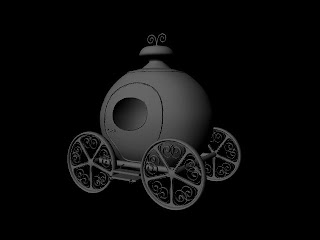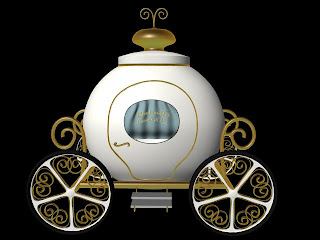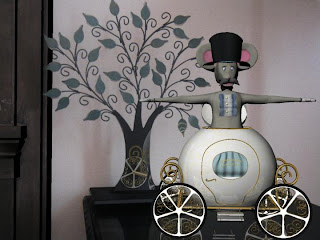
Friday, October 15, 2010
Character Expressions
Here are a bunch of expressions I made today that will soon allow my character to talk! (Except that right now, it refuses to work...) =/


Wednesday, October 13, 2010
3D Production II
I've been meaning to update this for weeks, and now the semester is almost halfway through. In any case, I had the summer to decide my concentration in the CADA program, and opted for the 3D track. People often mistake this to mean the 3D projection technology that is becoming more prevalent in the movies and on television, but that is not really the case. 3D animation in relation to 2D is like the difference between Pixar and Dreamworks animation and hand-drawn Disney animation. I model in 3D space rather than draw on flat paper.
(Of course, that is a slightly antiquated analogy. 2D work today means a lot of graphic design work in broadcasting and actual film shooting).
That being said, 3D Production II builds (a lot) on the basic skills I learned last semester and implements them on a semester-long project. Essentially, we are learning how the production pipeline works in terms of 3D animation, starting with storyboards and ending with rendering. In between, you need to model, texture, layout the cameras, deform, rig...the list goes on. The basic idea is to create 30 second short in which a character emerges from a container and juggles, then does something with the objects it is juggling.
Since I am incapable of keeping my life simple, I decided on a coachman who pops out of Cinderella's carriage and juggles glass slippers which then break and, in a puff of smoke, turn the coachman and carriage into a mouse in a pumpkin.
So, here are some test renders of my project, from Week 1 to the present. Enjoy.
Models of Cinderella's carriage, before and after texturing.


Mouse: original model, with a UV map, and textured.
The UV map allows you to see where certain parts of a texture (a file imported from Photoshop, for example) will end up on your model. UVs can be confusing because they originate from vertices on a model's geometry, but they are independent points that move the texture over the geometry (not the geometry itself). Get it??



The mouse in his house:

Next the models have to be put "in" a scene. In this case, I took a digital photograph in my apartment brought it into Maya as an image plane, and created a camera that I then matched to the photograph's perspective. Then I build additional objects to receive reflections and cast shadows. Here's the stock photo and the one with blocking:


Finally, models inserted into the scene. This is rendered using mentalray, which is where the reflections come from.

None of this stuff moves yet, so stay tuned for a talking, juggling mouse...
(Of course, that is a slightly antiquated analogy. 2D work today means a lot of graphic design work in broadcasting and actual film shooting).
That being said, 3D Production II builds (a lot) on the basic skills I learned last semester and implements them on a semester-long project. Essentially, we are learning how the production pipeline works in terms of 3D animation, starting with storyboards and ending with rendering. In between, you need to model, texture, layout the cameras, deform, rig...the list goes on. The basic idea is to create 30 second short in which a character emerges from a container and juggles, then does something with the objects it is juggling.
Since I am incapable of keeping my life simple, I decided on a coachman who pops out of Cinderella's carriage and juggles glass slippers which then break and, in a puff of smoke, turn the coachman and carriage into a mouse in a pumpkin.
So, here are some test renders of my project, from Week 1 to the present. Enjoy.
Models of Cinderella's carriage, before and after texturing.


Mouse: original model, with a UV map, and textured.
The UV map allows you to see where certain parts of a texture (a file imported from Photoshop, for example) will end up on your model. UVs can be confusing because they originate from vertices on a model's geometry, but they are independent points that move the texture over the geometry (not the geometry itself). Get it??



The mouse in his house:

Next the models have to be put "in" a scene. In this case, I took a digital photograph in my apartment brought it into Maya as an image plane, and created a camera that I then matched to the photograph's perspective. Then I build additional objects to receive reflections and cast shadows. Here's the stock photo and the one with blocking:


Finally, models inserted into the scene. This is rendered using mentalray, which is where the reflections come from.

None of this stuff moves yet, so stay tuned for a talking, juggling mouse...
Subscribe to:
Posts (Atom)
